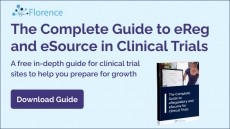Dispatches from BIO 2016
Who defines value? Quintiles talks changing reimbursement landscape

John J. Doyle, Dr.P.H., M.P.H., Senior Vice President Quintiles Advisory Services moderated a panel, “Accountability for Value: Who holds the Power” at BIO International on Monday. The session discussed the various ways future technologies can capture value and how companies will have to navigate the changing reimbursement landscape.
“The convergence between patient-centric approaches and digital technology is fundamentally changing the way patients collect and share their healthcare data,” Doyle told Outsourcing-Pharma.com. Specifically, mobile, cloud, sensors, and social media technologies are offering new opportunities for patient care and connectivity – giving rise to the empowered patient.
Now, as patients become more proactive healthcare consumers looking to manage their health, monitoring device manufacturers are “taking this consumer-driven healthcare to the next level,” he explained.
“Much of today’s digital, patient-centric research targets chronic conditions that are costly to treat,” he added. “Used in partnership with patient advocacy groups, this technology promises to democratize research by enabling personal data collection, amalgamation, and sharing.”
According to the National Institute of Health (NIH) wearables are increasingly being used in clinical trials, with close to 300 trials currently underway using this technology. In fact, the NIH is considering using smartphones and wearables for data collection as part of the White House’s Precision Medicine Initiative.
“Biopharma should continue down this path of exploring and piloting technology-based solutions in their clinical trials but not stop there,” said Doyle. “The same technology used to improve efficiency of the trial process and enhance interactions with clinical trial patients can be deployed to enhance the healthcare consumer experience in the market.”
The value play
“Macroeconomic pressures and austerity measures continue to impact the global marketplace and the ongoing transition of reimbursement models ‘from volume to value’ in U.S. healthcare is building momentum in 2016,” said Doyle. “The value play is rolling out in three inter-related mechanisms, purchasing, pricing and premium/coverage setting in value-based insurance design.”
However, he explained that value-based medicine is not about cutting costs – it’s about optimizing a therapy’s cost effectiveness. Additionally, while clinical proof was once enough, the industry must now include a compelling argument for treatment value.
“Biopharma has a clear mandate to price products based on value, and link pricing to metrics that already govern payment contracting,” said Doyle. “If they do not proactively define the pricing mechanism, others will do it for them.”
Doyle added the many healthcare stakeholders have pioneered pharma valuation schemes, most evident in oncology, with proposals from the American Society of Clinical Oncology (ASCO), among others.
“Biopharma clearly stands to benefit by being more proactive in establishing and harmonizing an objective scorecard for products,” he explained.
The scorecard
Quintiles recently described a systematic and evidence-based approach to appraising a drug’s relative performance. The multi-attribute valuation methodology takes into account efficacy, safety, economic, and quality of evidence factors to synthesize relative value created by pharmaceutical interventions. This method was applied to a cohort of 10 oncologic therapies.
Doyle explained that the results indicated an evidence-based appraisal framework allows for “simplification of comparison of relative performance of oncology treatments.”
“By including cost, the framework can provide a fair and balanced mechanism to compare relative value of these treatments,” he said.
However, regardless of the framework, Doyle explained that a tailored valuation must embrace each stakeholder’s unique perspective – especially the patient’s values.
“Yesterday’s direct-to-consumer (DTC) was geared to educating with the purpose of starting the conversation between patient and provider,” said Doyle. “Tomorrow’s DTC needs to personalize the value proposition to patients who are making critical decisions about their healthcare not only based on risk and benefit, but also value.”
According to Doyle, the biopharma industry should prepare for patients participating in value-based purchasing decisions in healthcare as they currently do in similar investments, such as finance and real estate.
“As we enter a new era of value and outcomes-based healthcare, exercising “systems thinking” – accounting for political, economic, social and technological factors – will be critical to our collective success in improving population health,” said Doyle. “Now more than ever, industry players must team up with other healthcare stakeholders if they want to improve system performance and optimize patient outcomes.”














